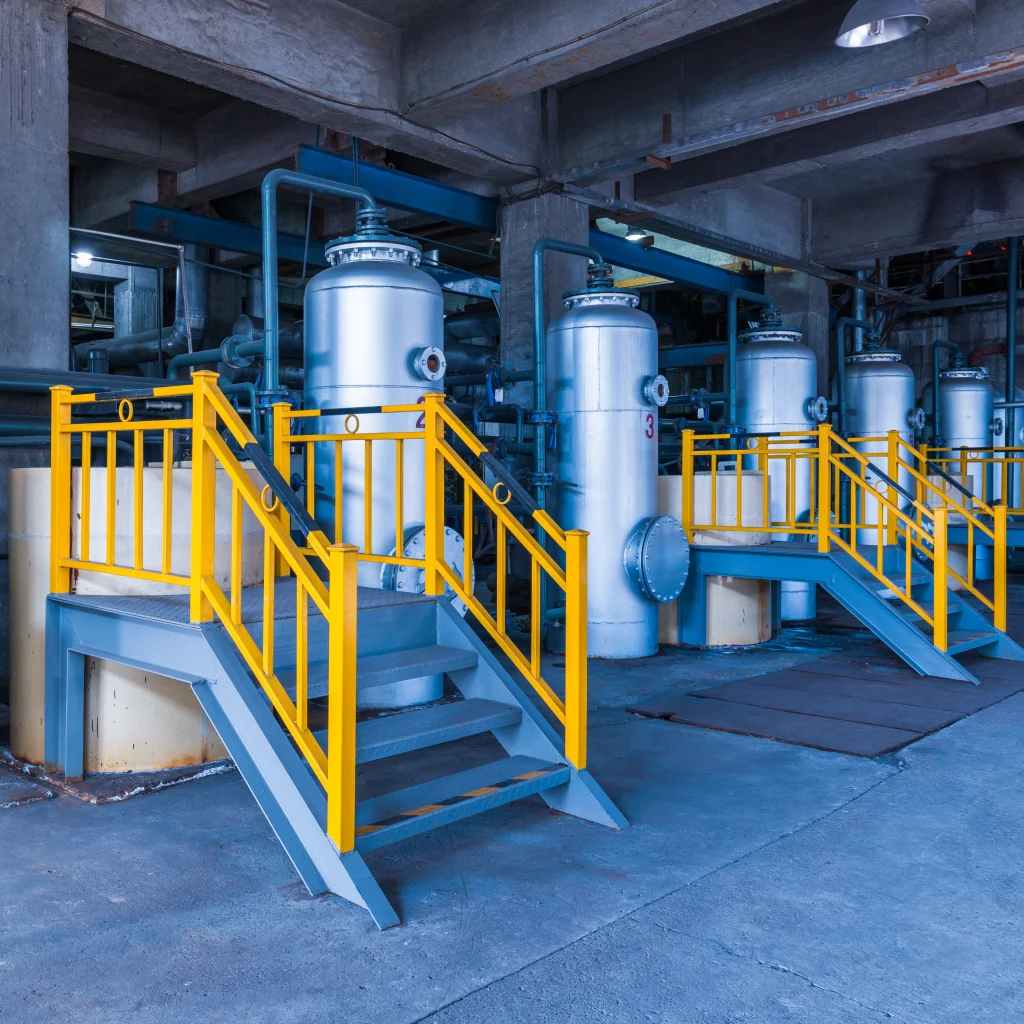
What Are Pressure Vessel Codes? Ensure Quality and Safety
What Are Pressure Vessel Codes—and Why They Could Save Lives
You’ve probably seen the phrase “what are pressure vessel codes” in safety manuals or technical specs. These codes are far more than formalities. OSHA inspections have uncovered cracked or damaged vessels in active workplaces. Without proper design or upkeep, a rupture can trigger fire, explosions, or toxic leaks. Fortunately, pressure vessel codes are built to prevent those risks. When followed, they ensure your equipment operates safely under high pressure. This article breaks down what these codes mean, why they matter, and how to apply them—so you can protect your team, your facility, and maintain smooth, compliant operations every step of the way.
What are pressure vessel codes
Pressure vessel codes define minimum standards for designing, building, inspecting, and maintaining high-pressure containers. These codes are vital for facilities using air tanks, reactors, or heat exchangers. After deadly boiler explosions in the early 1900s, ASME introduced the first Boiler & Pressure Vessel Code (BPVC) in 1914—just 114 pages. Today, it spans multiple volumes and is adopted in over 100 countries. U.S. compliance also involves OSHA and the National Board. These standards protect workers, assets, and the environment. New to the topic? Explore what is a pressure vessel to understand its role in energy, manufacturing, and petrochemical industries.
Common code families and their features
ASME Boiler & Pressure Vessel Code (BPVC)
The ASME BPVC is the global gold standard for pressure vessels safety. It’s divided into sections, with Section VIII being crucial for vessels over 15 psi. Here’s how it’s structured:
- Division 1: For most vessels above 15 psi; uses standard formulas for common shapes and loads.
- Division 2: For 3,000–10,000 psi; allows Finite Element Analysis (FEA) for complex designs.
- Division 3: For vessels above 10,000 psi; used in extreme-pressure cases.
ASME codes cover materials, welding, inspection, and even advanced techniques like bifurcation buckling analysis to ensure safe, reliable operation.
National Board Inspection Code (NBIC)
After you install your pressure vessel per ASME guidelines, the National Board provides additional oversight. The NBIC governs the installation, inspection, repair, and alteration of pressure-retaining items. Over 5,000 repair organizations in more than 60 countries rely on NBIC procedures (National Board). This standard also offers specialized programs (R, VR, NR, T/O) to ensure any repairs or testing maintain compliance.
OSHA’s role and other standards
If you operate in the United States, you’re likely familiar with OSHA’s regulations. OSHA addresses pressure vessel hazards in various sections, ensuring workers remain protected from fires, poisonings, explosions, and more . Around the world, you’ll find additional standards—like the EU’s Pressure Equipment Directive (PED)—that complement or supplement ASME guidelines. No matter the region, these codes converge on a single goal: keep everyone safe.
Why these codes matter for you
Codes unify everyone—manufacturers, inspectors, and owners—under the same safety umbrella. Without them, you risk dealing with:
- Higher likelihood of vessel failure or rupture
- Penalties and fines due to noncompliance
- Reduced equipment lifespan
- Unplanned downtime leading to revenue losses
When you buy or operate a code-certified vessel, you know it has passed stringent design checks, welding standards, and inspection protocols. In other words, code compliance is both a legal requirement and a smart business move.
Why compliance matters
Pressure vessel codes ensure consistent, safe performance. Standards like ASME Section VIII Div. 1 govern every weld, seam, and plate with decades of research and proven engineering. Skipping these codes can lead to legal risk—especially if failures cause injury or environmental damage. Ruptures, leaks, or toxic exposure remain serious threats in industries like oil refining and chemical processing. Codes reduce this risk. From design to decommissioning, they create a safety net. They also boost workforce confidence. When employees trust the equipment, morale rises—and so does productivity. To explore more, check out different types of pressure vessels and their requirements.
Practical steps for following pressure vessel codes
Identify your code requirements
First, confirm which code applies to your vessel. Above 15 psi usually means ASME Section VIII Div. 1; over 3000 psi may require Div. 2 or 3. Unsure? Consult a specialist to avoid compliance issues and ensure proper design from the start.
Work with experienced manufacturers
Select a manufacturer with an ASME stamp for your vessel type. This certification proves they meet strict quality standards. Many also register with the National Board to issue the NB Mark, confirming inspection by a qualified authority. They often use tools like Compress or PV Elite for precise design.
Conduct thorough inspections
Once your vessel is operational, it’s essential to keep an eye on wear and tear. Consider employing ultrasonic testing, radiography, or other non-destructive evaluation (NDE) methods to catch cracks early [3]. If corrosion or stress is building up, an inspector should spot it before it spreads. You can also look into pressure vessel maintenance strategies to stay on top of repair schedules.
Document every step
Think of your documentation as a living file. Keep track of:
- Design drawings and calculations
- Welding records (WPS/PQR)
- Material certificates
- Inspection reports
- Repairs and alterations
This file not only helps you pass audits but also simplifies the job if you ever decide to alter or replace your vessel. Remember, well-organized documentation is your best friend in proving code compliance.
Know the difference between a vessel and a tank
“Tank” and “vessel” aren’t the same. Tanks hold fluids at low or atmospheric pressure, while pressure vessels are designed for pressurized contents. Mislabeling can lead to code issues. Unsure? Look up the difference to ensure your design follows the correct standards from the start.
Factors to consider when choosing a code
Operating pressure and temperature
Every code sets acceptable limits for certain pressure and temperature ranges. For instance, if your system rarely climbs above 15 psi, you may not need the same level of design control as a petrochemical reactor that operates at thousands of psi and high heat.
Complexity of design
also matters. Simple shapes might qualify under ASME Section VIII Div. 1, while intricate designs benefit from Div. 2 with Finite Element Analysis for better stress accuracy.
Materials used
affects welding and inspection needs; ASME Sections II and IX outline proper specs and procedures.
Legal and regional demands
vary—U.S. plants typically follow ASME and OSHA, while Europe mandates the Pressure Equipment Directive (PED). If manufacturing for global clients, understanding overlapping or conflicting codes is crucial to avoid redesigns or delays. Choosing the right code—or mix of codes—early in the design process can significantly reduce costs and ensure compliance. Always consult industry experts to navigate these choices efficiently and effectively.
What are pressure vessel codes for your safety
When you ask, “what are pressure vessel codes?,” you’re really asking how to keep operations safe, compliant, and efficient. These codes offer trusted guidelines for vessel design, fabrication, and maintenance. Choosing the right code for your pressure and temperature range, working with expert manufacturers, and maintaining solid records are key to protecting your team and business.
Want to go deeper? Explore different types of pressure vessel codes to better engage with inspectors, manufacturers, and regulators—while boosting your safety confidence.
Need a reliable partner?
Red River specializes in the design and manufacturing of pressure vessels. We also fabricate related items such as prefabricated spools and skid packages.
Reach out to us today and experience the Red River difference. Where American-made products and American Values come together, we care more.
Frequently Asked Questions
1. What are pressure vessel codes?
Pressure vessel codes are official safety standards that govern the design, construction, inspection, and maintenance of pressure vessels—containers that hold gases or liquids under pressure. These codes ensure that vessels can safely handle high-pressure environments without risk of rupture, leaks, or explosions.
2. What is the ASME pressure vessel code?
The ASME pressure vessel code refers to ASME Boiler and Pressure Vessel Code (BPVC) Section VIII, developed by the American Society of Mechanical Engineers. It’s the most widely used standard globally for building pressure vessels. It outlines rules for design, materials, fabrication, testing, and certification, ensuring that vessels meet strict safety and reliability requirements.
3. What are the different types of pressure vessel codes?
Several organizations issue pressure vessel codes, each tailored to specific industries or regions. Common types include:
- ASME BPVC (USA & international) – Covers most industrial applications.
- PED (Pressure Equipment Directive, EU) – Required for vessels used in the European Union.
- CSA B51 (Canada) – Canadian code governing pressure equipment.
- AD 2000 (Germany) – German-based safety code for pressure vessels.
- ISO 11120 – For gas cylinders and transportable pressure vessels globally.
Each code has unique requirements, but all share one goal: prevent pressure-related failures through strict design and testing standards.
4. How often should I inspect my pressure vessel?
You’ll want to establish an inspection schedule based on your vessel’s age, service conditions, and local regulations. Some vessels may require annual checks, others may stretch it out longer. For more guidance, see how often should a pressure vessel be inspected.
5. What if my vessel is repaired or altered?
Any repair or alteration must meet the original code requirements or updated rules if available. Re-certification by a National Board Commissioned Inspector or similar authority could be necessary.
Key takeaway
- Proper design codes reduce your chance of costly, dangerous equipment failures.
- ASME Section VIII Div. 1, Div. 2, and Div. 3 each target different pressure and design complexities.
- Registered manufacturers using recognized software and certified welders often produce the safest, most reliable vessels.
- Inspections, whether ultrasonic or visual, are a must to catch early signs of wear and tear.
